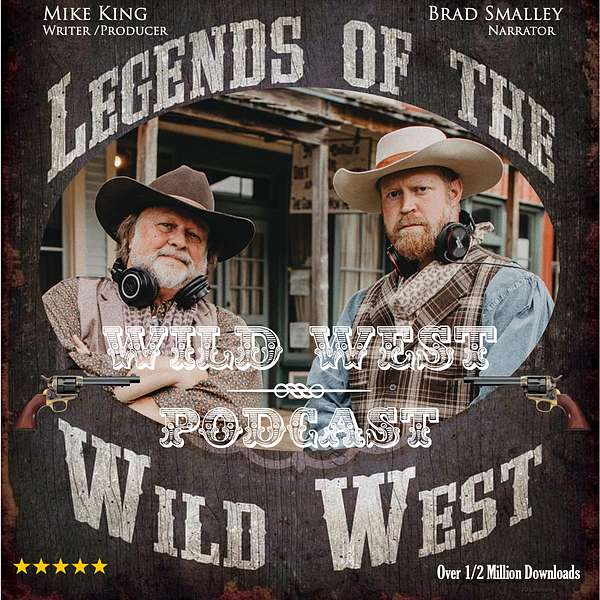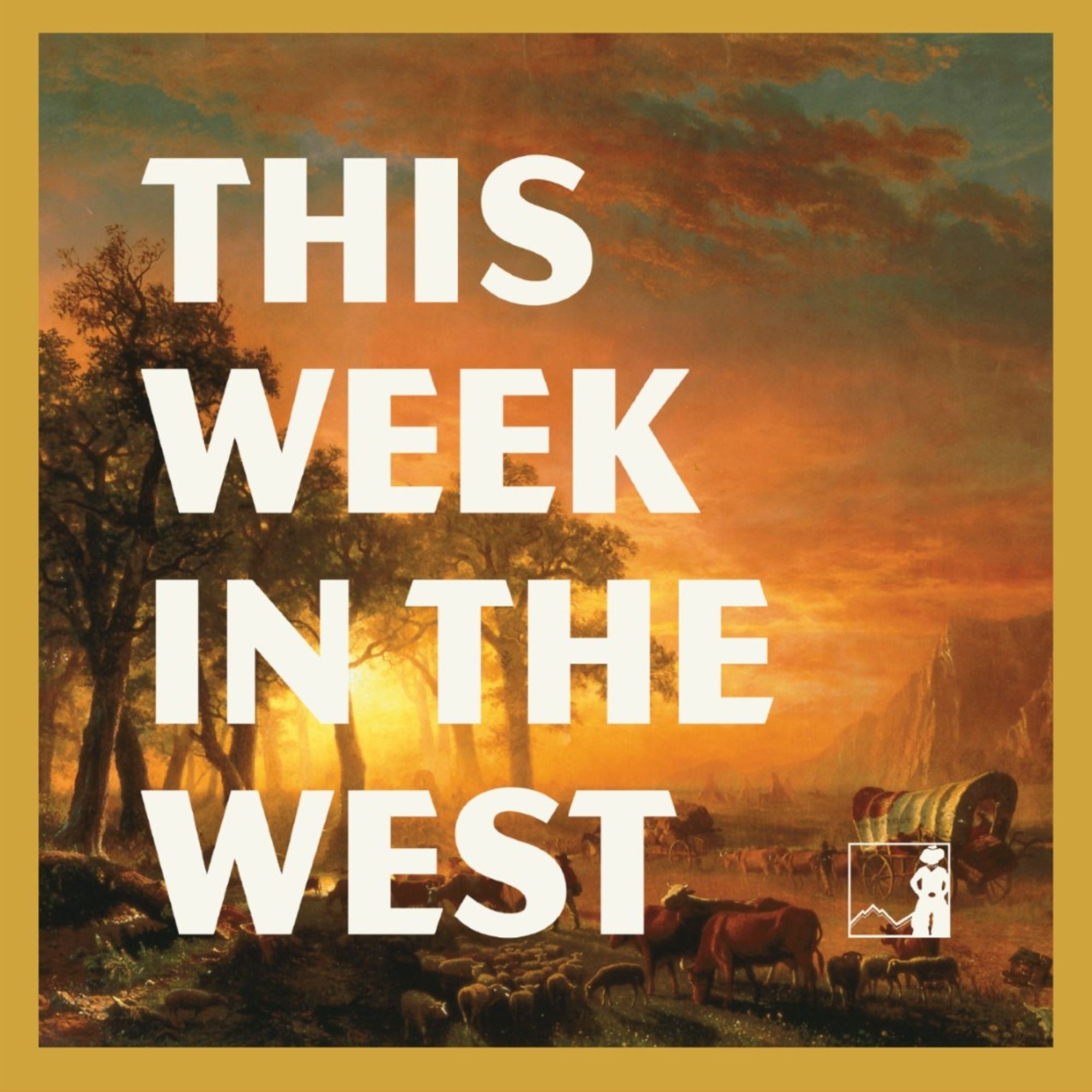
Wild West Podcast
Welcome to the Wild West podcast, where fact and legend merge. We present the true accounts of individuals who settled in towns built out of hunger for money, regulated by fast guns, who walked on both sides of the law, patrolling, investing in, and regulating the brothels, saloons, and gambling houses. These are stories of the men who made the history of the Old West come alive - bringing with them the birth of legends, brought to order by a six-gun and laid to rest with their boots on. Join us as we take you back in history to the legends of the Wild West. You can support our show by subscribing to Exclusive access to premium content at Wild West Podcast + https://www.buzzsprout.com/64094/subscribe or just buy us a cup of coffee at https://buymeacoffee.com/wildwestpodcast
Wild West Podcast
The Western Cattle Trail: Cowboys, Iconic Towns, and the Lifeline of the American West
Unravel the cultural and economic tapestry of the American West through the lens of the Western Cattle Trail in our conversation with Brad. Ever wondered how cowboys, cattle, and cow towns like Dodge City became iconic symbols of the West? Brad reveals the trail’s indispensable role in shaping these enduring images, making the American West a captivating tale of resilience and adventure. Discover how the trail was not just a route but a lifeline, driving millions of cattle from Texas to thriving northern markets and transforming towns into bustling hubs of activity.
Explore the symbiotic relationship between key landmarks and the cattle industry along the Western Trail. From Dugan's Roadhouse to Dodge City, these places not only provided essential services to cattle drives but also flourished due to their strategic importance. Brad sheds light on how these stops offered rest, supplies, and opportunities, creating a web of interdependence that was crucial for the trail's success. Listen to how this intricate network of locations contributed to a legacy that continues to influence the culture and economy of the American West today.
Brad, we've talked a lot just recently. I think we've probably done six or seven shows recently on the Western Cattle Trail, but this one in particular is a question that I want all of our audience to understand is what role did the Western Trail play in the development of the American West?
Speaker 2:Well, mike, I think it really had two roles, the first being potentially the most significant, I would say, is the cultural impact. When you think about the American West, one of the images that comes to mind is cowboys. You can't have cowboys without cattle. You've got cowboys and cattle, you've got cow towns. That immediately leads you to places like Dodge City, our understanding of what the American West is. It's just woven into the fabric of it and you cannot escape that.
Speaker 2:And the Western Trail itself was the most significant trail of them all in regards to bringing cattle up and enduring that image of cattle drives and cowboys and cow towns and all the things that make the American West fun to see, learn about, read about, just a wonder of our imagination. The second role is, I would say, economically. The Western Trail brought six million head of cattle north from Texas. That is no small amount of well, it's not jump change. I'll say that the economics of those cattle were just insane in those post-Civil War years. Bringing them up north.
Speaker 2:There wasn't a market for them in Texas, north to the more standardized railroads that were driving through places like Kansas, nebraska and points even further north so that they could be sent back to major processing points in Chicago and Kansas City. Certainly the economics for those major hubs of the processing were fantastical in Chicago, kansas City, the stockyards out there, but then in just the shipping points, places like Dodge City, like Ogallala, and points further north into Montana and even up into Canada. A little village like Dodge City, once the buffalo hunt had kind of come to a close, that may have been the end of the community had it not been for those cattle drives coming through town. Dodge by itself really reinvented itself when the cattle drives started coming through and gained a place in in popular culture and is still a thriving community, as much and more of a cattle town now as it was in 1884.
Speaker 1:Brad, in our episode of Dugan's Roadhouse on the Western Cattle Trail, which we just recorded, one of the things that we mentioned is all of the stops or not all of the stops, but some of the major stops along the trail as it goes up into canada. So some of these places are significant landmarks along the trail and we talked about one, of course, was Dugan's Roadhouse and the other, of course, is Dodge City. But how did the landmark locations along the Western Trail contribute to the cattle industry?
Speaker 2:Well, they really kind of fed off of each other. I guess I'll talk mostly about places like Dugan's Roadhouse, since that was a focal point of our last podcast episode. A place like Dugan's Roadhouse really wouldn't have probably lasted long had it not been for feeding off of the cattle drives. Certainly, yes, it had its infancy in feeding the needs for the Ford Supply, Ford Dodge military road and the freight and military lines traveling between those two points. But once the cattle drives started coming through, it definitely found a new life. It provided a place of rest. Provided a place of rest, opportunity, goods and services, needs, a drink, a bit to eat, just supplies that you need to continue on the next several miles on the way to Dodge City, Just a great stopping over point. And of course, the cattle drives themselves. They fed off of places like Dugan's Roadhouse.
Speaker 2:If a place like Dugan's didn't exist, the cattle drive would have had to go somewhere else that maybe they could get those services that Dugan's would be providing. So it really was a mutual kind of relationship. Then you also had places, maybe not as tangible, just another nearby site in Dodge history. It was a major watering hole for buffalo the. The indians used it for many years. It was even known to the conquistadors, the spanish explorers as they traveled through, and people out in this part of the country going long before that. Once the cattle drives started coming through, it continued to be a major water source on their way. So it was in places like this were defined by the cattle industry.
Speaker 1:You know, brad, we talk a lot about the Chisholm Trail also in some of our episodes. We talk a lot about the Chisholm Trail also in some of our episodes and we know that it started right after the Civil War because there was a need for the Texas ranchers to move their cattle and Joseph McCoy decided that he would start a cattle yard there in Abilene, kansas. But some things happened over time and of course we know it was the quarantine line or legislation. Kansas legislation, because of tick fever, changed the route and moved the quarantine line which then created the Western Cattle Trail. But what I would want to know today is how did the Western Trail compare to the Chisholm Trail in terms of impact and influence on the cattle industry?
Speaker 2:I guess I would characterize the Western Trail as being sort of the sequel to the Chisholm Trail. The Chisholm Trail absolutely set the standard as far as the Kansas cattle industry, kansas cattle towns, were concerned. It had its window, albeit fairly brief, at least as certainly as Abilene is concerned. Again, abilene absolutely set the standard for what a Kansas cattle town was supposed to be. Then, when the quarantine line moved further west through places like Ellsworth Park City and eventually to Dodge, dodge and the Western Cattle Trail perfected it. Dodge and the Western Cattle Trail perfected it. They took that standard that had been set by the Chisholm and ran with it. It was the sequel that was bigger and better than whatever came before, and for 10 straight years the Western Cattle Trail defined the cattle industry, not just between Texas and Kansas but culturally all over the country. People that understood what the cattle drives were all about identified what they were hearing, what they were seeing, what they were learning, the beef that they were eating across the country with the Western Cattle Trail. You can't have the great American West without the Western cattle trail and the sites that it served.
Speaker 2:We'd like to add at this time just a personal thank you to our audience. Mike and I have been doing this podcast now for eight years and the the Western cattle trail and Dodge city certainly is very near and dear to our, our life, our soul, our hearts and for you to be joining us out there every time we deliver a new episode. We really thank you for the opportunity to be able to continue to do this and looking forward to many, many more years to come, especially as we come up to what is sort of the crowning goal of our work so far in the upcoming Western Cattle Trail Association 150th anniversary. Very excited to be a part of this, thank you.
Speaker 3:As I was out walking one morning for pleasure, I spied a cow puncher riding along. His hat was thrown back and his spurs was a-jingling. As he approached, he was singing this song Whoop-a-tie-i-oh, get along, you little doggies. It's your misfortune and none of my own.
Podcasts we love
Check out these other fine podcasts recommended by us, not an algorithm.
